Help
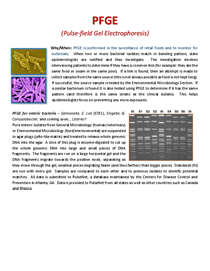 Pulse-field Gel Electrophoresis
Molecular Biology - Help
June 11, 2015
Pulse-field Gel Electrophoresis
Molecular Biology - Help
June 11, 2015
The separation of enzyme-digested genomic DNA to generate an organism fingerprint, which is compared to local and national databases to identify strain information and identify potential outbreak clusters.
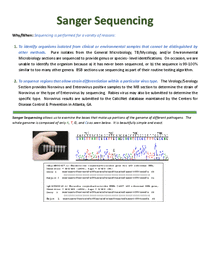 Sanger Sequencing
Molecular Biology - Help
June 11, 2015
Sanger Sequencing
Molecular Biology - Help
June 11, 2015
The identification of bacterial and fungal organisms by ‘reading’ the DNA letter code and searching against a database library.
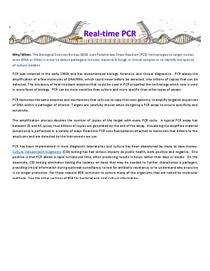 Real-Time Polymerase Chain Reaction
Molecular Biology - Help
June 11, 2015
Real-Time Polymerase Chain Reaction
Molecular Biology - Help
June 11, 2015
The targeting of specific DNA sequences of an organism using short primers and a labeled probe to find matching sequences in a sample and track the amplification of those matching sequences during each round of amplification by measuring the fluorescence of the probe.
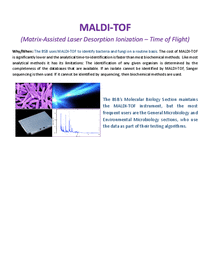 Matrix-Assisted Laser Desorption Ionization - Time of Flight
Molecular Biology - Help
June 11, 2015
Matrix-Assisted Laser Desorption Ionization - Time of Flight
Molecular Biology - Help
June 11, 2015
Pure, isolated organisms are placed on a specialized plate and vaporized with a laser. The laser causes proteins to disperse and pass through a vacuum tube to a detector within the instrument.
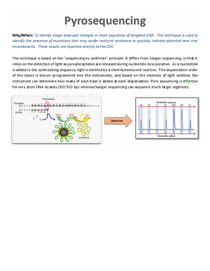 Pyrosequencing
Molecular Biology - Help
June 11, 2015
Pyrosequencing
Molecular Biology - Help
June 11, 2015
A short, single strand of DNA is sequenced as its complementary strand is synthesized. The release of pyrophosphates, which occurs during the addition of each base, begins a 3-step reaction which causes visible light to be released.


